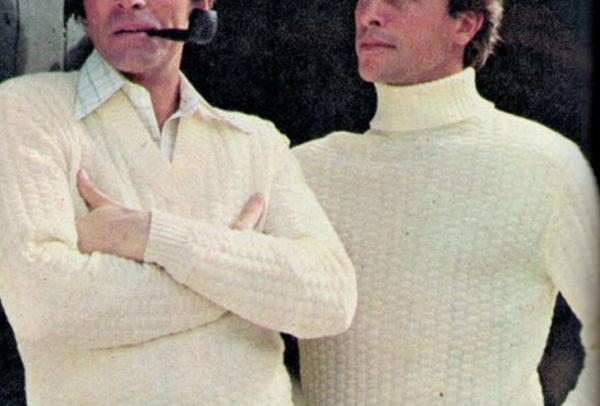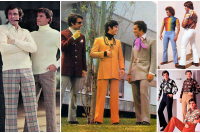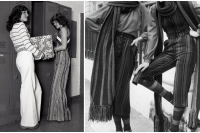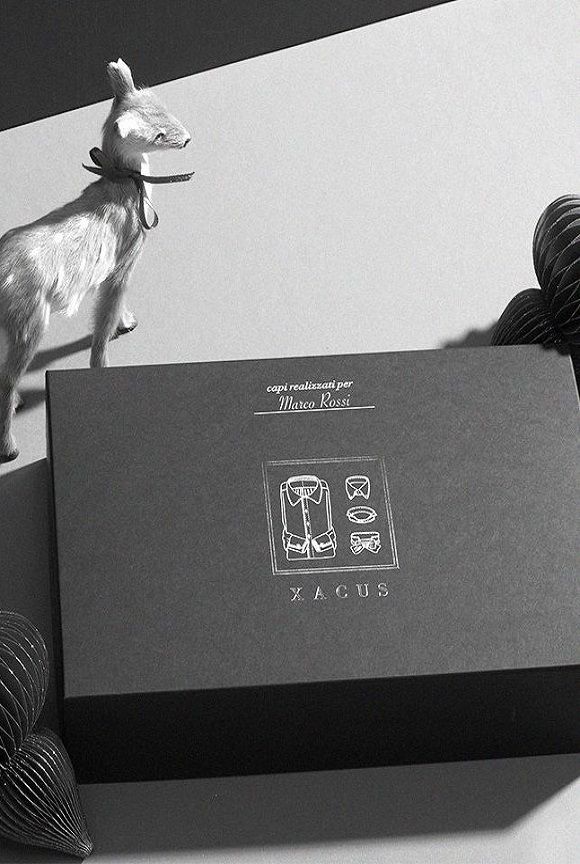
Defining means drawing up frontiers. And in the case of the 1970s this is very difficult, almost impossible, because in that decade echoes of the social protest of a few years earlier, which culminated in the great Woodstock rally, cohabit with new trends in music (the birth of the disco). In fashion, too, the keyword is eclecticism: jersey fabrics came into their own, with denim shirts taking centre stage along with geometric and optical prints. In general, the look was very flamboyant, with bright colours and contrasting shapes.
Trousers were wide and bell-bottomed. They even developed into palazzo pants. The upper part of the body, however, was enclosed in very short, tight garments. A denim shirt was a must, and a suede waistcoat to evoke the mood of the old West. But we also find a less casual style, with high-necked sweaters worn under jackets. Then warm colours like ochre, beige, mustard, coffee and burgundy were in vogue, contrasted with very vivid patterns and optical prints.
Although the main actors in the 1970s, both in society and in the world of fashion, were women, men’s fashions were clearly identified in the men’s shirtswith long collars, in bright colours, Liberty of London fabrics and optical patterns.
There were, however, also those who bucked the hippy style trend of the 1960s – the Preppies. This was a philosophy of life as well as a fashion, and it emerged as a reaction to the youth movements of some years before. The name derives from the “preparatory schools” attended by all the offspring of the American upper class. The aesthetic inspiration came from the English public schools: men’s shirts, jackets and cardigans with a British flavour, tartan tie and moccasins.
The decade of the ‘70s was thus a kaleidoscope of colours, shapes and styles where links with the past continued to be strong, but where we could also glimpse the first signs of the arrival of a new age: the 1980s!



